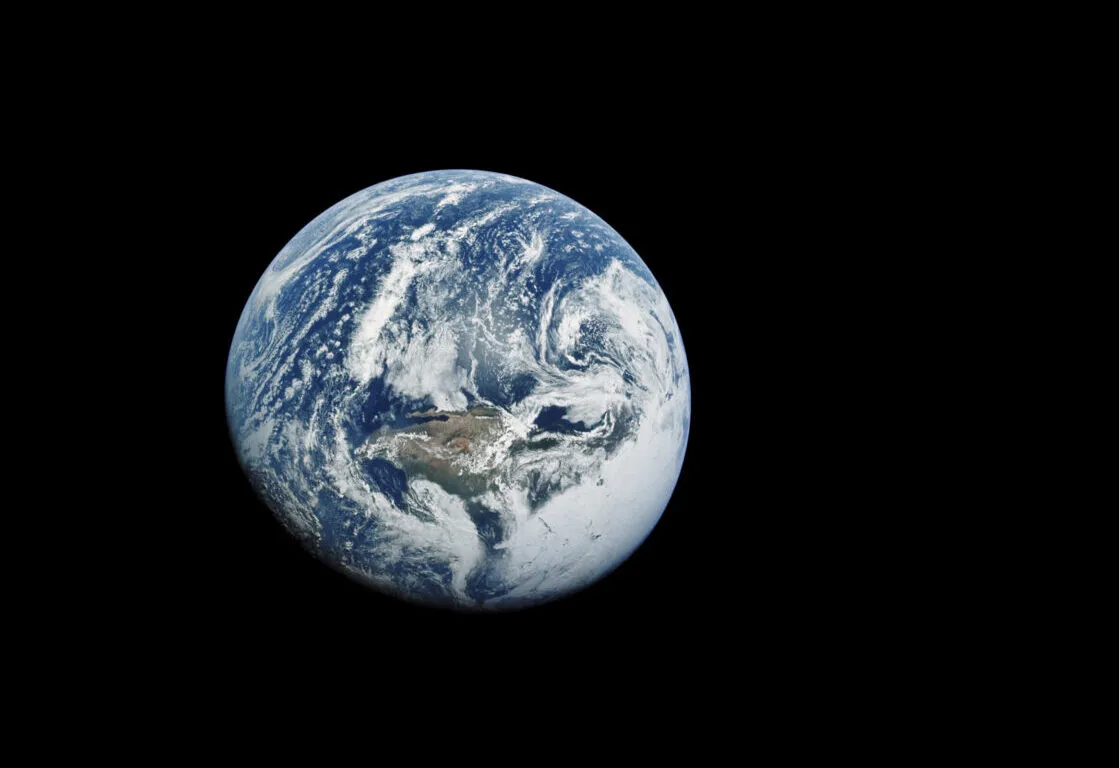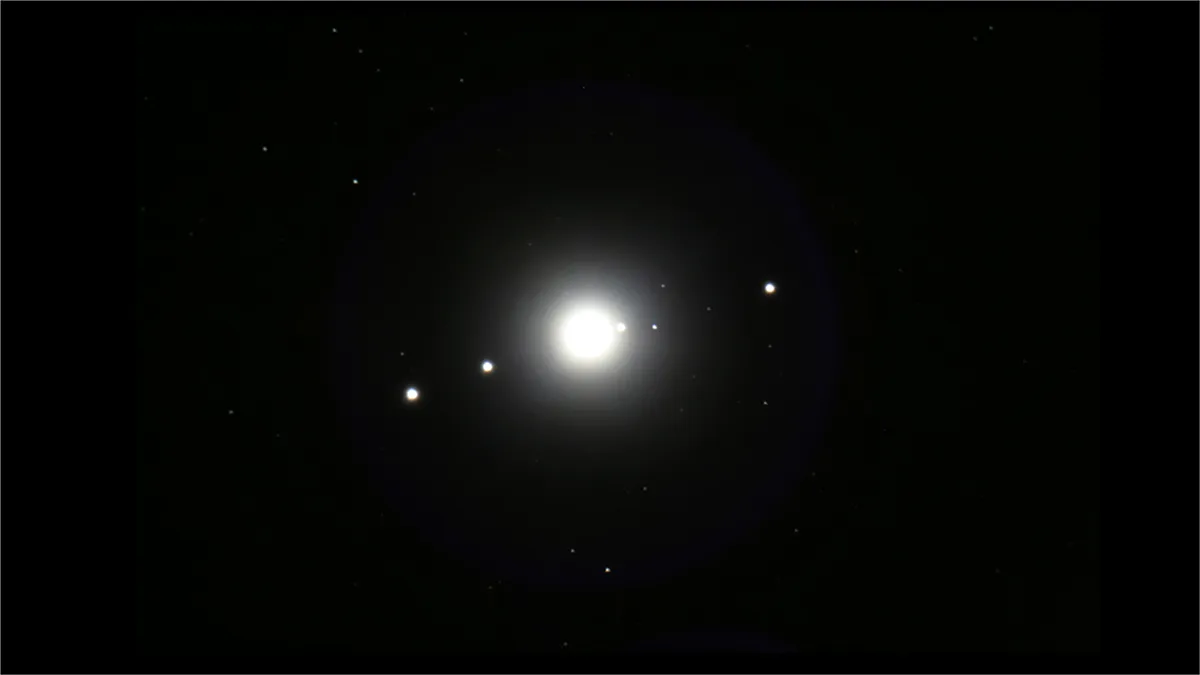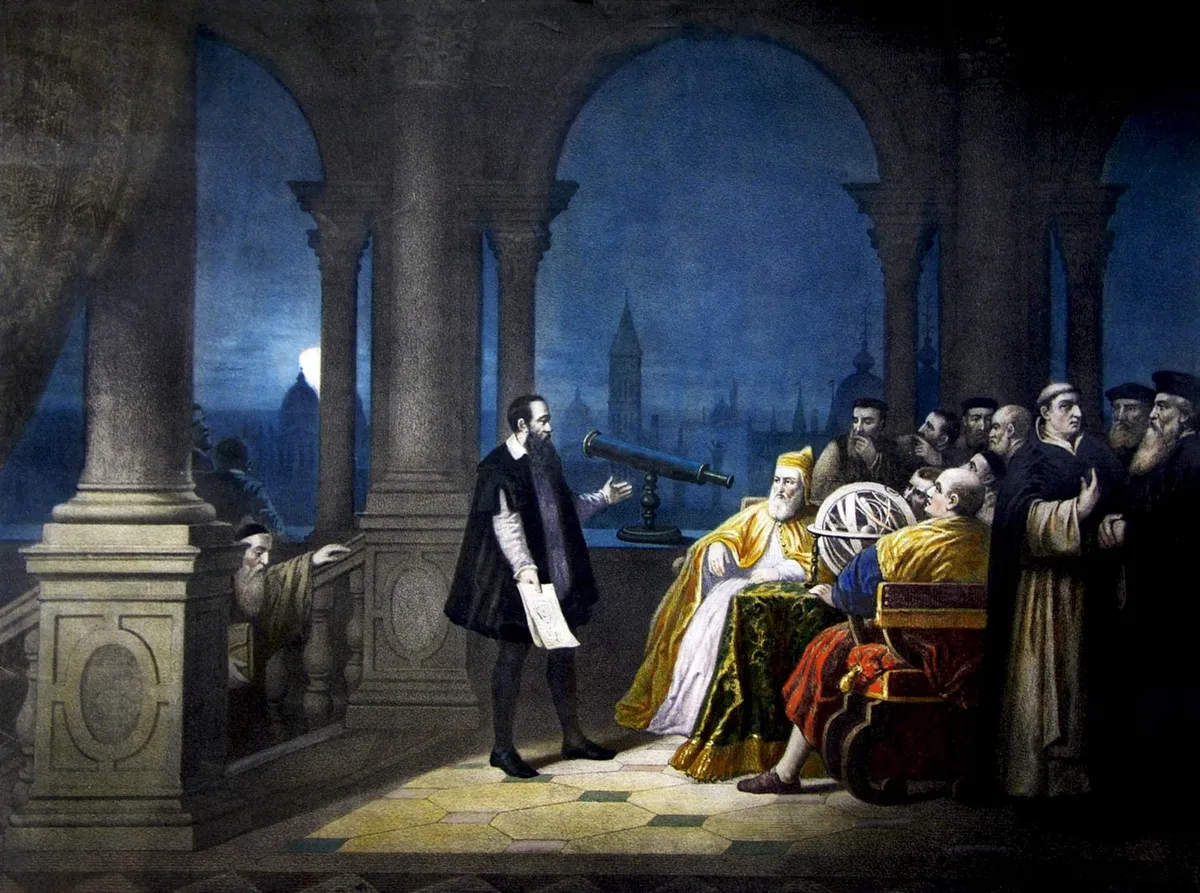While heads of government discuss progress towards global climate goals, every citizen also has a role to play.
And astronomers – amateur and professional alike – have a special place in the environmental movement.
From roots in empirical evidence to the unique observations of Earth from space, the voice of astronomers can be one of the strongest in protecting our home planet.
Find out how Earth-orbiting satellites study climate change

The past few years have seen a dramatic increase in worldwide attention and concern about climate change and wider environmental degradation.
David Attenborough’s documentary Blue Planet II provided a new insight into the problems of plastic in our oceans, while Greta Thunberg has provided a thoughtful voice for her generation, galvanising action around the world.
Unprecedented fires from the Arctic to the Amazon have attracted international attention, with multiple national and local governments declaring climate emergencies.

Exoplanets and Earth's place in the cosmos
As the number of exoplanets - planets orbiting stars outside of our Solar System - we know of has multiplied over past decades (we've now reached over 5,000 confirmed exoplanets), it's reinforced the value of our home in the Universe.
Most exoplanets we’ve found are not likely to be hospitable to life as we know it and while visions of colonising the stars are popular in science fiction, the reality is different.
The closet potentially habitable planet, which may be orbiting our nearest star, Proxima Centauri b, is 4.37 lightyears away. The journey would take tens of thousands of years.

Closer to home is Mars, and the idea of colonising the Red Planet has increased in recent years, but astronomers recognise the difficult challenges of radiation and lack of resources that will need to be overcome to land people on Mars.
In contrast, inter-governmental reports have given us a 12-year timeline to make progress on climate goals to avoid the worst impacts of global warming.
Astronomers more than anyone should recognise the value of our home planet, perhaps best summed up by former UN head Ban Ki-moon, who responded to the climate change debate by noting “There is no Plan B, because there is no Planet B”.
Astronomers ask many questions about our Universe, but one of the most compelling is, are we alone? What makes a planet habitable?
Underlying many missions has been the desire to understand if there is life out there, from the Viking Mars Lander’s experiments in the 1970s to the first Venus missions.
Many missions later, and our increased understanding of Mars and Venus underscores Earth’s unique circumstances: the existence of stable conditions on a planet for the billions of years needed to allow life to not only develop, but evolve.
We will continue to search for life through missions to the icy moons of Jupiter and Saturn but right now, we know that there is only one planet teeming with life: Earth.

Observing Earth from space
Looking further afield outside our Solar System, exoplanet analysis and the SETI (Search for Extraterrestrial Intelligence) programme have yet to reveal signs of life.
Some argue that we may be alone in the Galaxy, indeed the Universe, while others are looking for an answer to the question 'will we ever find life beyond Earth?'.
This knowledge would be profound in its impact on our appreciation, and willingness to protect, the amazing diversity of life that stable planetary conditions have allowed on our planet.
Space agencies such as NASA, ESA, JAXA and Roscosmos have played a vital role in helping to understand climate change and its impact on Earth.
Satellites provide vital environmental information such as average temperatures, levels of CO2 and the thickness of polar ice caps. This is critical to understand the impact of humanity on our planet.
However, it is perhaps space travel – manned and robotic – that plays the most important role in changing hearts and minds around the environment.
Voyager’s Family Portrait showed Earth as a pale blue dot, and the images of Earth from space captured by generations of astronauts have arguably helped to spark the environmental movement.

As Shuttle and International Space Station astronaut Ron Garan said, “When we look down at Earth from space, we see this amazing, indescribably beautiful planet. It looks like a living, breathing organism. But it also looks extremely fragile.”
The first images taken by Apollo astronauts of Earth rising above the Moon inspired countless individuals to consider our planet in a new light.

Astronomers' role in protecting our planet
Astronomy is based in the scientific method: on observations, measurements and the formulation, testing, and modification of hypotheses.
It’s at the heart of our discipline along with peer review, collaboration and critique.
As scientific evidence about climate change is being challenged and ignored around the world, we must speak up for science and support the evidence around the subject.
Indeed, at the roots of astronomy are figures such as Galileo who risked their lives reporting observations that challenged the world view of the time.
Indeed, it was Galileo's observations of Jupiter that changed how we view the Universe.

While there are many opportunities to make environmentally friendly changes in our daily lives, as an astronomical community there are a few specific tasks we can do.
First, we need to recognise the seriousness of the threat to Earth.
While some express concern over sending messages to space as a danger to humanity from alien species, we should look at the way we are treating our planet as an imminent concern.
We can use our knowledge of the stars and planets to speak out for our environment.
Collective action is also important. If you’re a member of a local astronomy society, encourage it to advocate for policies that protect the environment.
This could even take the form of tackling light pollution, which is known to have an adverse effect on flora and fauna.
Seek out opportunities to support citizen science initiatives, which contribute to expanding our knowledge and protection of the natural environment and biodiversity.
Our planet, after all, is where we spend our time looking up, so we have a vested interest in protecting it.
Standing up for science

In spite of overwhelming evidence, climate sceptics continue to question the role of humanity in global warming.
As scientists, astronomers need to reiterate the strong findings on climate change from the scientific community.
Astronomers have a history of advocating for science at personal risk, and we can take a lesson from this history.
In the 17th century, Galileo Galilei’s observations of the phases of Venus and Jupiter’s moons provided evidence that contradicted prevailing religious thought about man and God, and our place in the Universe.
In 1616 the Roman Catholic Inquisition ruled that the heliocentric idea that Earth orbited the Sun (as proposed by Copernicus in 1543) was heretical, a ruling which held until 1835.
While Galileo first complied with the Church’s orders, in 1632 he published a book showing support for the planets’ motion around the Sun, which led to a charge of suspected heresy and being placed under house arrest for the rest of his life.
Galileo’s trial took place after a complaint was filed against him for his support of the heliocentric theory.
In 1991, Pope John Paul II confirmed that the Catholic Church had erred in condemning Galileo and he was pardoned in 1992.
Seeing the world as one

The overview effect is a term used to describe the profound cognitive shift in awareness and worldview as a result of seeing the Earth from and in space.
It was first coined by Frank White in his 1987 book The Overview Effect: Space Exploration and Human Evolution.
White undertook interviews with 25 astronauts and cosmonauts, and discovered a similar response that came from their experience in space.
His interviewees described the beauty and fragility of the planet and, with their view of our planet as a whole, the concept of nations and conflicts were in turn minimised.

What’s more, this change in perspective remained with astronauts and cosmonauts during their life.
Although he died before the term was coined, the words of the first human in space, Yuri Gagarin, provide a profound exemplar of the overview effect, when he said: “Circling the Earth in my orbital spaceship, I marvelled at the beauty of our planet.
"People of the world, let us safeguard and enhance this beauty, and not destroy it.”
Astronomers must take these lessons and share their concept of peace and protection.
This article originally appeared in the November 2019 issue of BBC Sky at Night Magazine.